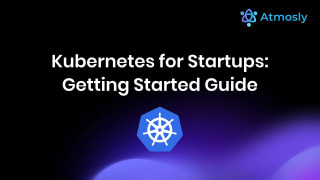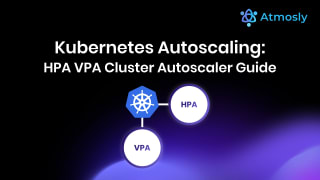Platform engineering has become the foundation of modern DevOps. As enterprises scale across clouds, the need for flexibility and vendor independence grows. Enter Kubernetes the open-source powerhouse that enables teams to build, deploy, and manage cloud-agnostic platforms effortlessly.
By decoupling applications from specific infrastructure providers, Kubernetes helps organizations avoid vendor lock-in, optimize costs, and improve reliability. In this article, we explore how Kubernetes empowers platform engineers to achieve true multi-cloud flexibility, and share best practices to make your architecture scalable, resilient, and future-ready.
What is a cloud-agnostic platform?
A cloud-agnostic platform is designed to run applications across multiple cloud providers such as AWS, Azure, and Google Cloud without being tied to one. It ensures flexibility, resilience, and cost optimization through portable, containerized workloads and Infrastructure as Code (IaC) practices.
The concept of cloud-agnostic platforms
Cloud-agnostic platforms, as the name suggests, are solutions that are independent of any specific cloud provider. They enable organizations to seamlessly migrate their applications and workloads across different cloud environments without being locked into a single vendor. This concept is gaining popularity among businesses seeking greater flexibility, scalability, and cost optimization.
By adopting a cloud-agnostic approach, companies can avoid vendor lock-in and leverage the best features from various cloud providers based on their individual needs. It allows them to choose from a wide range of options like Amazon Web Services (AWS), Microsoft Azure, Google Cloud Platform (GCP), or even private clouds.
One key advantage of implementing a cloud-agnostic platform is the ability to mitigate risks associated with downtime or service disruptions. When an application is designed to be agnostic to any particular infrastructure or provider, it becomes easier to implement redundancy measures such as multi-cloud deployments or hybrid architectures.
Furthermore, embracing cloud-agnosticism empowers organizations to optimize costs by selecting the most cost-effective cloud services for different components of their architecture. For example, they may choose AWS EC2 instances for compute-intensive tasks while leveraging GCP's BigQuery for data analytics.
In addition to flexibility and cost optimization benefits, building a cloud-agnostic platform also promotes innovation within an organization. Developers can focus on writing code rather than worrying about underlying infrastructure specifics. This fosters agility in deploying new features and improvements at a faster pace.
Embracing the concept of cloud-agnostic platforms offers numerous advantages - from reducing dependencies on specific vendors and optimizing costs to enabling rapid deployment cycles and fostering innovation within organizations.
And now we come full circle back to our initial question - how does Kubernetes fit into this equation? Let's explore its role in building truly flexible and agile infrastructures next!
How Kubernetes Enables Cloud-Agnostic Flexibility
Kubernetes has emerged as a game-changer in the world of platform engineering, offering unparalleled flexibility when it comes to cloud provider choices. This powerful open-source container orchestration tool allows teams to build and manage applications seamlessly across different cloud environments.
One of the key benefits of Kubernetes is its ability to abstract away the underlying infrastructure, enabling developers to focus on building and deploying applications without being tied down to a specific cloud provider. With Kubernetes, you can deploy your application on any major public or private cloud, including AWS, Google Cloud Platform, Microsoft Azure, or even your own on-premises data center.
This level of freedom empowers organizations to choose the best-fit cloud provider based on their unique business requirements. Whether it's cost-effectiveness, performance optimization, regulatory compliance considerations or simply avoiding vendor lock-in - Kubernetes makes it possible.
Moreover, Kubernetes provides consistent APIs and abstractions that hide the differences between various cloud providers. This means that you can develop your application once and then leverage Kubernetes' capabilities for seamless portability across different clouds. It eliminates the need for time-consuming rewrites or modifications when migrating from one cloud provider to another.
By leveraging Kubernetes' advanced features like auto-scaling, load balancing and self-healing capabilities across multiple clouds simultaneously becomes easier than ever before. You can scale your application horizontally within minutes by increasing or decreasing resources dynamically based on demand - regardless of which cloud provider you choose.
In addition to flexibility in choosing cloud providers, Kubernetes also offers a vibrant ecosystem with an extensive array of tools and services that enhance its functionality further. From monitoring and logging solutions to security features and deployment automation tools – there are countless options available that integrate seamlessly with Kubernetes.
If you're looking for a way to achieve flexibility in your choice of cloud providers while ensuring ease-of-use and scalability – look no further than embracing Kubernetes as part of your platform engineering strategy. Its ability to provide true multi-cloud support coupled with its robust features makes it an ideal choice for organizations looking to build cloud-agnostic applications.
Why Cloud-Agnostic Architecture Matters
In the rapidly evolving landscape of software development and deployment, the role of platform engineering has never been more critical. Organizations are actively seeking ways to reduce dependency on specific cloud providers, enhance flexibility, and optimize costs. One key aspect of achieving this is building cloud-agnostic solutions that offer unparalleled flexibility in choosing cloud providers.
Kubernetes, the open-source container orchestration platform, plays a pivotal role in enabling platform engineers to create cloud-agnostic platforms. With its robust capabilities and seamless integration with multiple cloud platforms, Kubernetes empowers organizations to harness the full potential of their applications. In this blog post, we'll explore the connection between platform engineering and Kubernetes in building cloud-agnostic solutions.
The Challenge of Vendor Lock-In
Vendor lock-in occurs when an organization's technology stack is deeply tied to a particular cloud provider's services and technologies. This dependency can lead to several challenges, including:
- Reduced Flexibility: Shifting from one cloud provider to another becomes complex, costly, and may hinder adapting to evolving business needs or leveraging cost-effective alternatives.
- Higher Costs: Staying exclusively with a single provider may result in less competitive pricing and fewer options for choosing the best-suited services for your applications.
- Increased Risk: Relying solely on a single provider increases the risk of service outages and data loss, as you're entirely dependent on their infrastructure.
Kubernetes for Platform Engineers
Kubernetes offers a compelling solution to these challenges by abstracting away the underlying infrastructure and providing a consistent interface for deploying and managing containerized applications. Let's delve into how Kubernetes empowers platform engineers to build cloud-agnostic platforms:
1. Containerization
Kubernetes encourages containerization, utilizing technologies like Docker. Containers package applications and their dependencies, making them portable and independent of the underlying infrastructure. This means you can run the same containerized application on any Kubernetes cluster, irrespective of the cloud provider.
2. Infrastructure as Code (IaC)
Kubernetes allows you to define the configuration of your containerized applications as code by specifying the desired state through declarative manifests. While Kubernetes itself does not serve as a complete Infrastructure as Code (IaC) solution for provisioning underlying cloud resources, its declarative approach complements broader IaC practices. To manage these application configurations, tools such as Helm charts and custom YAML files are commonly employed. When it comes to managing and provisioning resources across various cloud providers, Kubernetes is frequently used in tandem with other IaC tools like Terraform.
3. Multi-Cloud Deployment
Kubernetes supports multi-cloud deployment strategies. You can run Kubernetes clusters on various cloud platforms, including AWS, Azure, Google Cloud, and even on-premises data centers. This flexibility enables you to distribute workloads across different providers or migrate between them as needed.
4. Service Abstraction
Kubernetes abstracts cloud-specific services through its own abstractions, such as LoadBalancer and PersistentVolume. This means you can deploy your applications using these Kubernetes abstractions, and Kubernetes will handle the underlying implementation based on the cloud provider's capabilities.
However, it's worth noting that while Kubernetes simplifies the deployment aspect, managing multi-cloud configurations can introduce additional complexities in terms of networking, security, and integration with cloud-specific services. This is where the power of platform engineering shines. It abstracts away these underlying complexities, managing them internally to offer a more streamlined experience in cloud portability, simplifying tasks like deployment, scaling, and workload management.
5. Standard API
Kubernetes provides a standard API for interacting with your applications and infrastructure. This consistency simplifies automation and integration with other tools, making it easier to manage applications regardless of the cloud provider.
Best Practices for Cloud-Agnostic Platform Engineering
To effectively build cloud-agnostic platforms with Kubernetes, platform engineers should follow these best practices:
- Utilize Standard Kubernetes Abstractions: Leverage Kubernetes-native abstractions and services to avoid vendor-specific features.
- Implement Configuration Management: Store cloud-specific configurations in a consistent and easily swappable manner.
- Continuous Testing: Regularly test your applications on different cloud providers to ensure they perform as expected.
- Monitoring and Observability: Implement a unified monitoring and observability strategy that works across different clouds.
- Disaster Recovery Plans: Develop cloud-agnostic disaster recovery plans to ensure resilience in case of cloud outages.
Conclusion
Kubernetes empowers platform engineers to break free from cloud vendor lock-in and build cloud-agnostic platforms. By following best practices and embracing containerization and Infrastructure as Code (IaC), you can create platforms that are versatile, cost-effective, and resilient. As cloud technology continues to evolve, Kubernetes remains a cornerstone of cloud-agnostic platform engineering, enabling organizations to adapt and thrive in the ever-changing tech landscape.
Leverage Atmosly’s engineering platform to automate Kubernetes workflows, ensure observability, and achieve true cloud-agnostic scalability. Explore Atmosly Platform






